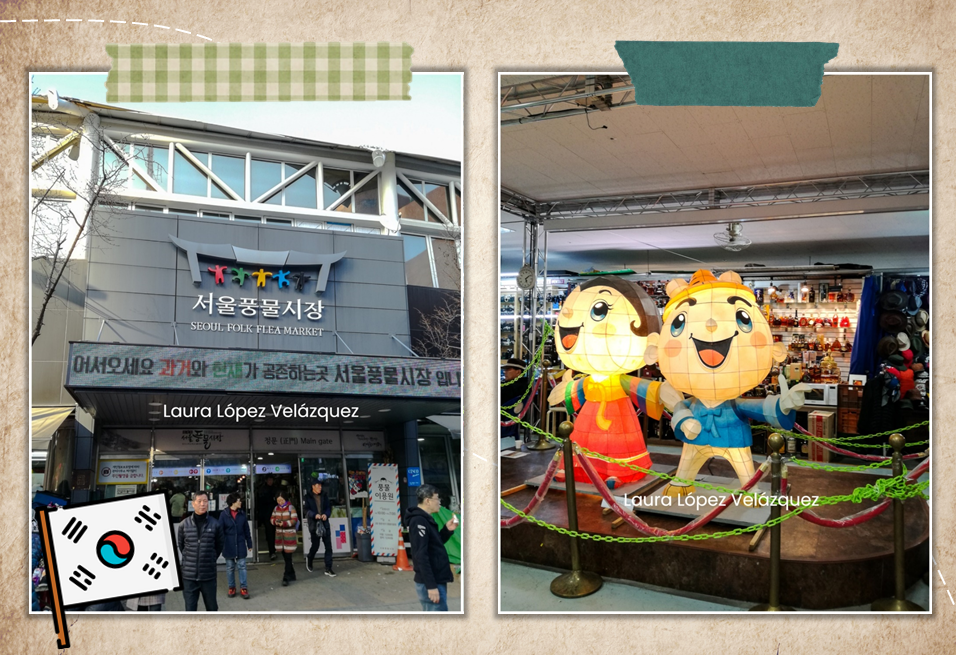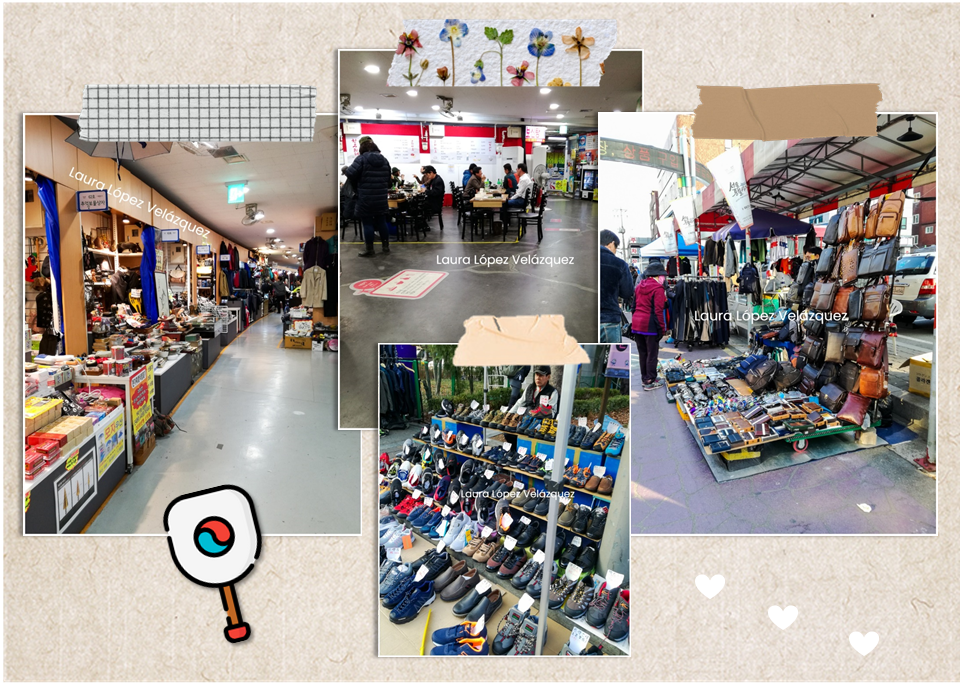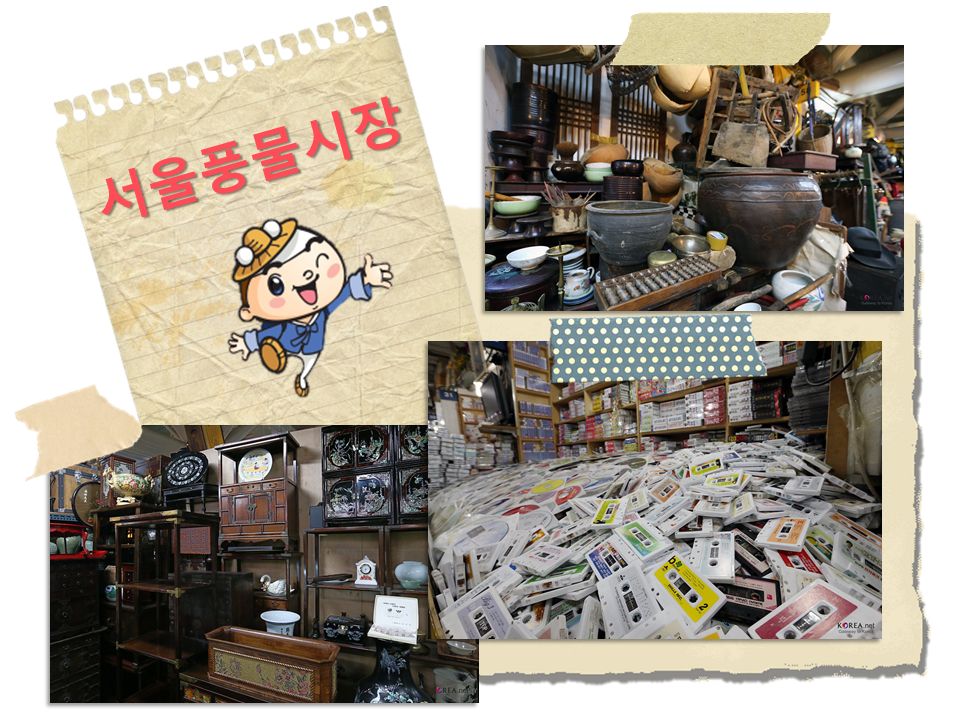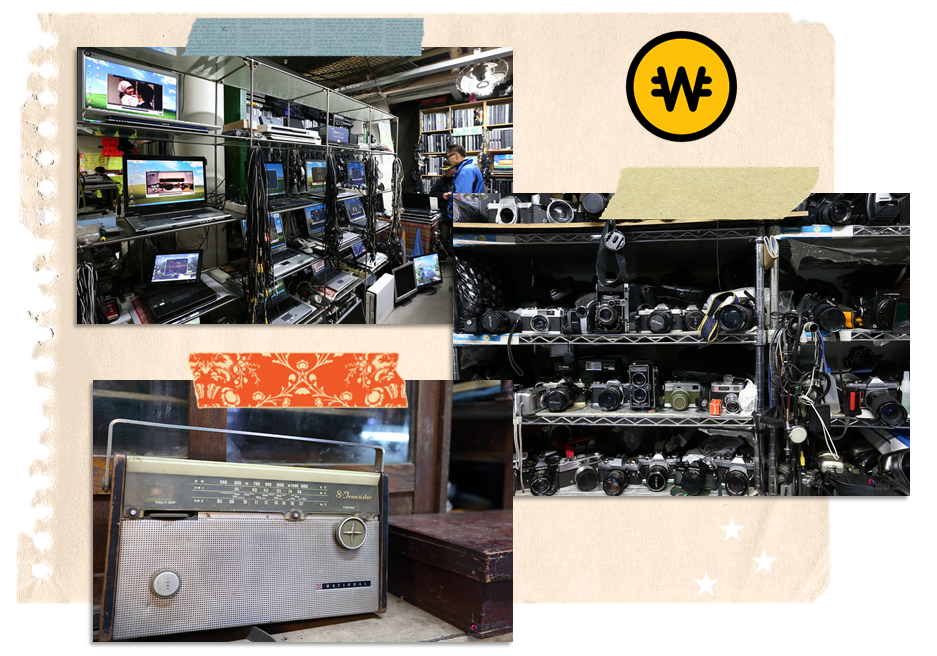- 한국어
- English
- 日本語
- 中文
- العربية
- Español
- Français
- Deutsch
- Pусский
- Tiếng Việt
- Indonesian
By Honorary Reporter Laura Lopez Velazquez from Mexico
Photo = Laura Lopez Velazquez, Korea Culture and Information Service

Most Latin American countries have flea markets selling second-hand goods. In Korea, the biggest in this category is the Seoul Folk Flea Market, which is also known as the Seoul Pungmul (Folk) Market.

The Seoul Folk Flea Market has colorful and cute characters as decorations. (Laura Lopez Velazquez)
This market moved to a new location in 2008 but had a long history before that since being founded amid difficult times back in the 1950. A group of merchants who could not maintain their stalls at a flea market in Seoul's Hwanghak-dong neighborhood set up the market due to the restoration of Cheonggyecheon Stream. Outside the market also has several merchants who mainly sell antiques of all kinds, bags and shoes.

The Seoul Folk Flea Market has a variety of items ranging from Korean souvenirs to shoes and bags.
As Korea's largest of its kind, the market has more than 885 stores on two floors divided into seven zones according to the colors of the rainbow: red, orange, yellow, green, blue, indigo and violet. Just about everything imaginable can be found here like new, old, rare or authentic items at good prices.
The first floor has the orange, yellow and green zones. The orange section has regional specialties such as squid from Ulleungdo Island and traditional crafts such as tableware. The yellow zone features second-hand antiques such as typewriters, telephones, watches and radios, and the green zone is for antique furniture and art.

A variety of antiques are sold at the Seoul Folk Flea Market. (Korea Culture and Information Service DB)
On the second floor, the blue zone sells fashion accessories, while the indigo zone hawks both vintage and modern clothing, paintings and Hanji (traditional handmade paper). Finally, the purple zone sells various products as well as electronics and tools, and the red zone is for food and located on both floors.

The market also features used electronics from yesteryear (Korea Culture and Information Service DB)
In 2015, the market was designated "future heritage" of Seoul and has grown into a tourist attraction thanks to its proximity to the stream. Its numerous items evoke memories of Korea's rich history and past and draws visitors.
enny0611@korea.kr
*This article is written by a Korea.net Honorary Reporter. Our group of Honorary Reporters are from all around the world, and they share with Korea.net their love and passion for all things Korean.